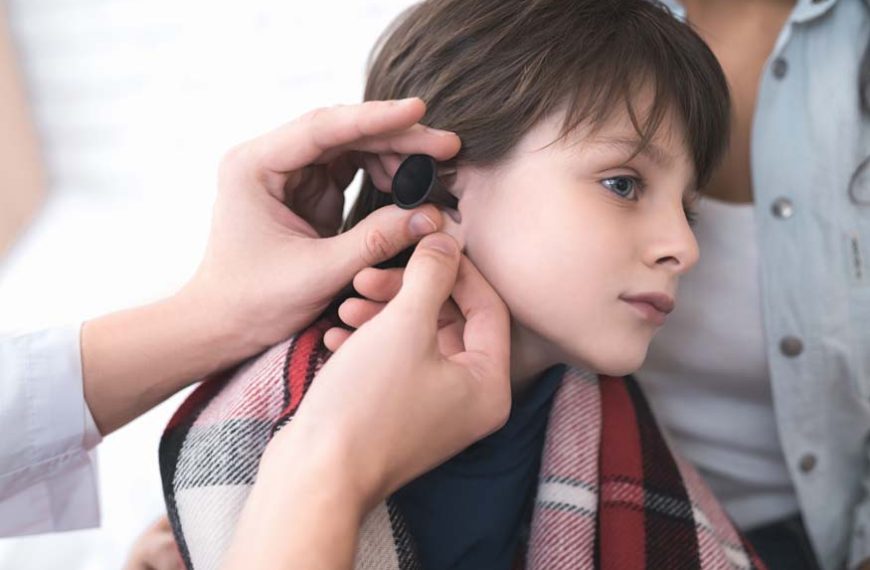Ear infections in toddlers are a common concern for parents, but understanding their causes, recognizing symptoms, and seeking appropriate treatment can help your child recover quickly and comfortably. In this comprehensive guide, we will delve into the world of toddler ear infections, providing insights in an intelligent and warm tone. Let’s begin by exploring the various facets of these infections, without resorting to overused keywords or clickbait tactics.
I. Understanding Toddler Ear Infections
Toddler ear infections, also known as otitis media, occur when the middle ear becomes inflamed. This condition can be painful and distressing for your child. It’s crucial to understand the causes, symptoms, and treatment options to ensure a healthy recovery.
II. Causes of Ear Infections in Toddlers
Ear infections in toddlers can be triggered by several factors, including:
- Eustachian Tube Issues: Toddlers have shorter and more horizontal Eustachian tubes, which are less effective at draining fluid and can lead to infections.
- Upper Respiratory Infections: Cold and flu viruses can increase the risk of ear infections by causing congestion and mucus buildup.
- Allergies: Allergic reactions can lead to inflammation in the Eustachian tubes, making it easier for bacteria to enter and cause an infection.
III. Recognizing Symptoms
Identifying the signs of a toddler ear infection is vital for timely intervention. Common symptoms include:
- Ear Pain: Toddlers may pull or tug at their ears due to the discomfort.
- Fever: A sudden rise in body temperature is often a sign of infection.
- Irritability: Your child may become more fussy and irritable than usual.
- Difficulty Sleeping: Pain and pressure in the ears can disrupt sleep patterns.
- Fluid Drainage: In some cases, pus or fluid may ooze from the ear.
IV. Diagnosis and Medical Consultation
If you suspect your child has an ear infection, it’s essential to seek a medical diagnosis. A healthcare professional will examine the ears and may recommend a course of action, which could include antibiotics for bacterial infections or pain relief for symptom management.
V. Home Care for Ear Infections
In addition to medical treatment, you can provide comfort to your child with some home care measures:
- Pain Management: Over-the-counter pain relievers like acetaminophen can help alleviate discomfort.
- Warm Compress: A warm, moist cloth held against the affected ear can soothe pain.
- Rest: Ensure your child gets plenty of rest to aid the healing process.
- Hydration: Encourage your toddler to drink fluids to prevent dehydration, especially if there’s a fever.
VI. Prevention Strategies
Preventing ear infections is a worthy goal. Consider these strategies to reduce the risk:
- Breastfeeding: Breast milk provides vital antibodies that can help protect against infections.
- Vaccinations: Keep your child’s vaccinations up to date to reduce the likelihood of illnesses that can lead to ear infections.
- Hand Hygiene: Encourage good hand-washing practices to minimize the spread of germs.
VII. Toddler Ear Infection Treatment
In cases where medical intervention is necessary, the following treatments may be recommended:
- Antibiotics: If the ear infection is bacterial, a course of antibiotics will be prescribed by a healthcare professional.
- Myringotomy: In some severe cases, a small surgical procedure to drain fluid from the ear may be necessary.
- Watchful Waiting: Not all ear infections require immediate antibiotics. Sometimes, a healthcare provider may recommend a watchful waiting approach, especially for mild infections.
VIII. When to Seek Medical Attention
While some ear infections can be managed at home, it’s crucial to recognize situations that warrant a doctor’s visit:
- Severe Pain: If your child’s pain is intense and not improving with over-the-counter medication.
- High Fever: If the fever is persistently high or accompanied by other concerning symptoms.
- Recurrent Infections: If your child is experiencing frequent ear infections, it may indicate an underlying issue that needs addressing.
IX. EuroKids: Nurturing Happy and Healthy Toddlers
At EuroKids, we understand the importance of a nurturing environment for your toddler’s growth and development. We prioritize your child’s well-being and provide a safe and stimulating space for them to thrive. Our programs encourage holistic development, ensuring your child is prepared for a bright future.
X. Support and Comfort for Your Toddler
During the course of a toddler’s ear infection, providing emotional support is as crucial as medical treatment. Here are some tips to help your child cope:
- Comforting Cuddles: Hold your child close, providing a sense of security and warmth to ease their distress.
- Distraction: Engage your toddler in activities or toys they enjoy to take their mind off the discomfort.
- Quiet Environment: Create a peaceful, quiet environment to minimize stress and ensure your child gets the rest they need.
- Effective Communication: Explain the situation to your toddler in a reassuring manner, making them feel heard and understood.
XI. Long-term Impact and Complications
While most toddler ear infections resolve without major issues, recurrent or severe infections can potentially lead to complications such as:
- Hearing Loss: Prolonged or recurrent ear infections can affect hearing, impacting speech and language development.
- Speech Delays: Hearing difficulties resulting from ear infections can delay speech development in some cases.
- Behavioral Issues: Chronic ear infections may contribute to behavioral problems in children.
It’s important to address these issues promptly by consulting with a healthcare professional.
XII. Natural Remedies and Ear Infection Myths
In your quest to soothe your toddler’s ear infection, you may come across various natural remedies and myths. It’s essential to approach these with caution:
- Garlic Oil: Some parents use garlic oil drops to alleviate ear pain. While it’s considered safe by many, consult a healthcare provider before using any home remedies.
- Myth: Blow Dryer Technique: Some believe using a hairdryer on a low, warm setting can help clear the ear canal. However, this method is not recommended and may cause harm.
- Swimmer’s Ear Drops: These should not be used for middle ear infections, as they are designed for outer ear canal issues.
Toddler ear infections can be challenging for both parents and children, but with knowledge of their causes, recognition of symptoms, and access to appropriate treatment, you can guide your child through a swift recovery. Remember to prioritize your child’s well-being and provide them with the comfort and care they need during this time.
In an intelligent and warm tone, we’ve explored the world of toddler ear infections, aiming to equip parents with the information necessary to navigate this common childhood ailment. Always consult a healthcare professional for personalized advice and support.
The information provided on this website is not a substitute for professional medical advice. EuroKids encourages you to consult with a qualified healthcare professional for any health concerns you may have. The information on this website is not intended to diagnose, treat, cure, or prevent any disease.















